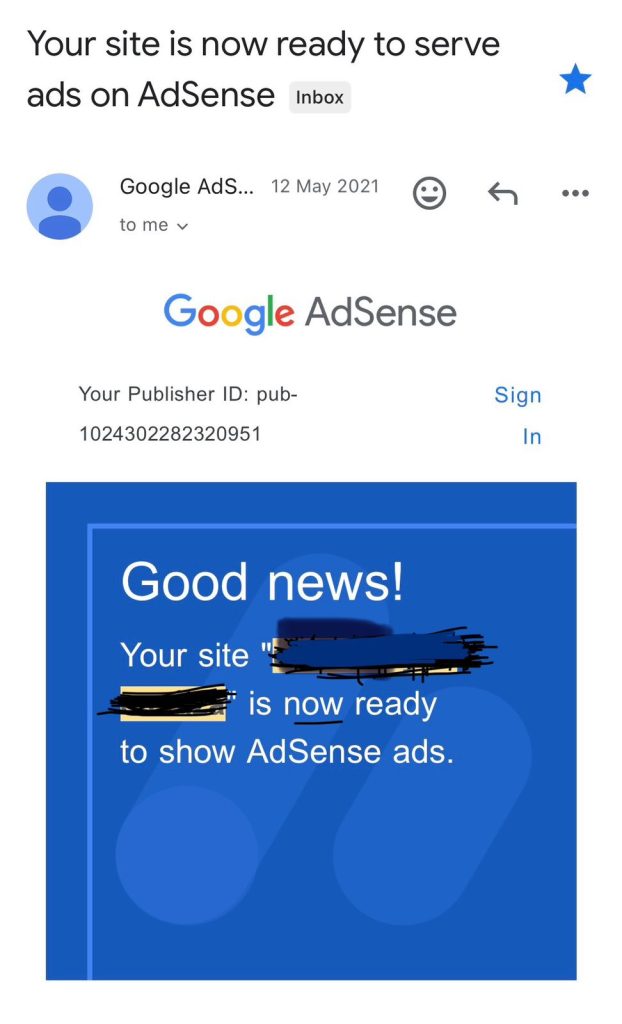The Step-by-Step Process to Get Your Website Approved by Google AdSense

Getting your website approved by Google AdSense is a significant milestone in the world of online monetization. However, it’s not always as simple as just applying and waiting for approval. There’s a process to follow, and understanding each step will help ensure that you’re ready when the time comes to submit your application. Here’s the step-by-step process I followed to get my website approved by Google AdSense, and I hope it will help you too.
Step 1: Create High-Quality Content
When I started, the very first thing I focused on was creating content that was useful, informative, and engaging for my target audience. Content is the backbone of any website, and it’s also what Google looks at when deciding whether or not to approve your site. Before I even considered applying for AdSense, I made sure that I had a good amount of content on my website, at least 15-20 posts.
Each post was designed to solve a problem, answer a question, or provide valuable information that people in my niche would find helpful. It’s important to avoid generic content that’s just filler – Google wants to see that your site offers something real to visitors. I made sure my content was original, well-written, and provided answers to common questions within my niche.
Step 2: Design a User-Friendly Website
The next step in the process was designing a website that was user-friendly. Google doesn’t just care about the content; they also care about the overall user experience. I knew that if my website was hard to navigate or if the design wasn’t up to par, it could hurt my chances of being approved by AdSense.
I worked on making sure my website was easy to navigate, with a clear menu, and well-organized content. I also made sure the website was mobile-friendly since more and more users are browsing the web on their phones. I used responsive design to ensure that my website looked good and functioned well on all devices.
Step 3: Implement the Basic Pages
At this stage, I made sure that my website had the basic pages that Google expects to see. These pages include a Privacy Policy, a Terms and Conditions page, and a Contact Us page. While they might seem simple, they are essential for AdSense approval.
The Privacy Policy and Terms and Conditions pages let Google know that you are following legal guidelines, and the Contact Us page ensures that visitors can reach you if needed. I created these pages early on, so I didn’t have to worry about them when it was time to apply for AdSense.
Step 4: Drive Traffic to Your Website
Google AdSense doesn’t approve websites with little to no traffic. One of the key factors that Google looks at when reviewing your site is the amount of organic traffic you’re getting. Before I applied for AdSense, I made sure to focus on driving traffic to my website.
I used a combination of organic search engine optimization (SEO) and social media promotion. I engaged in Facebook groups, shared my website on WhatsApp, and made sure that my content was optimized for search engines. I also used tools like Google Analytics and Google Search Console to track my traffic and see what was working.
Step 5: Be Patient and Avoid Rushing
One of the hardest things about the AdSense approval process is being patient. I knew that I had to avoid rushing into my application, so I took my time. I spent a few months building my site, promoting it, and making sure that everything was in place before applying for AdSense.
I also made sure to avoid asking friends or family members to visiting my site just to boost traffic instead of engaging with the content, as Google doesn’t approve sites that engage in invalid traffic. It’s tempting to try to get that traffic to boost your numbers, but this can get you rejected. Instead, I focused on organic traffic and allowed the visitors to engage with my content naturally.
Step 6: Submit Your AdSense Application
When I finally felt confident that my website was ready, I submitted my AdSense application. Google will review your website during this process, and it can take anywhere from a few days to a couple of weeks for them to make a decision.
The most important thing I did during the application process was to remain calm, keep writing content and promoting my site. I checked my AdSense account regularly, but I didn’t worry about it too much. It was important not to panic or try to reapply too quickly if the first application wasn’t accepted.
Step 7: Respond to AdSense’s Request (If Necessary)
In some cases, Google may ask for additional information or require you to make changes before approving your website. If you receive an email from Google asking for clarification or more details, don’t panic. Just follow the instructions carefully and make any necessary changes.
For example, in my case, there was a small issue with the ads.txt file that I had missed. It was an easy fix, and once I updated the file, I submitted the changes and was quickly approved.
Step 8: Celebrate and Keep Improving

When I finally received my AdSense approval email, I was ecstatic! The process had been long, but the feeling of accomplishment was worth it. However, getting approved is just the beginning. I knew that I still had to continue improving my website, creating fresh content, and optimizing it for SEO.
Once I got the approval, I focused on increasing my revenue by tweaking ad placements, testing different ad formats, and monitoring my performance using Google AdSense’s reporting tools.
Conclusion: The Key to Getting Approved by Google AdSense
Getting your website approved by Google AdSense is a process that requires patience, attention to detail, and consistent effort. By following these steps – from creating high-quality content to driving traffic and ensuring your website is user-friendly – I was able to get my website approved and start earning money through AdSense.
If you follow this process, take your time, and focus on building a valuable website, you’ll be well on your way to AdSense approval. Remember, success doesn’t happen overnight, but with persistence, you’ll get there.







